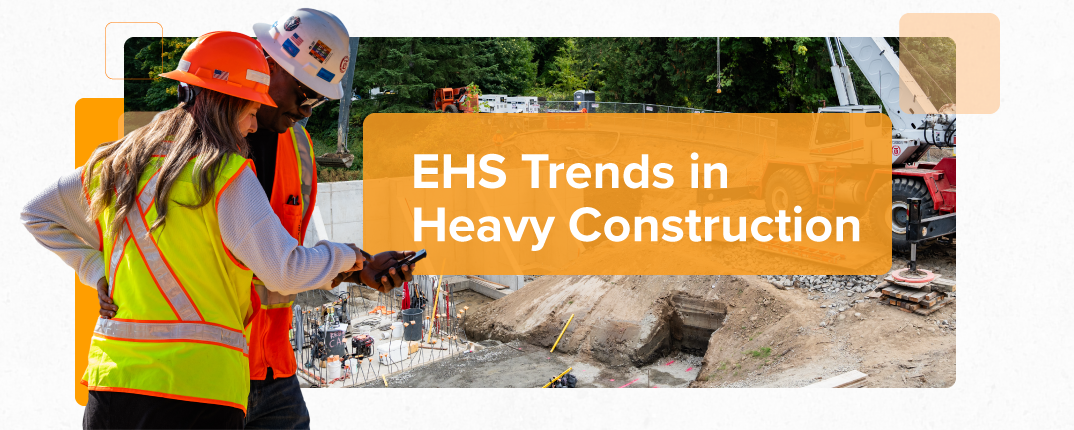As the construction industry evolves, the focus on safety intensifies, marking a significant shift towards protecting its most valuable asset: its workforce. This commitment to safety, similar to bolstering operations with an indestructible shield, highlights an industry-wide move beyond compliance. It's a culture change, embedding safety into the fabric of daily operations. This evolution not only empowers leaders on the ground but also signals a clear “We’ve got your back” message to every team member.
Below are six trends and factors leading to a stronger focus on EHS (Environmental, Health, and Safety) in construction:
1. Stricter Regulations: As regulatory authorities like OSHA intensify their oversight, especially noticeable during an election year, there is a significant push for compliance with new regulations addressing issues such as heat, mental health, and union participation in safety inspections. This increased regulatory scrutiny demands a more systematic approach to safety management. Additionally, fines per incident have doubled in recent years, dramatically increasing the cost of non-compliance.
2. Rising Insurance Costs and Litigation Risks: As insurance costs soar, companies are pressured to control or reduce their Experience Modification Rate (EMR). A litigious society further escalates the risk of litigation, making safety an even more critical concern. Proactive measures such as regular safety audits, employee training programs, and adherence to regulatory standards can mitigate these risks. Extensive documentation of safety protocols and incidents is also crucial in defending against potential litigation and controlling insurance costs.
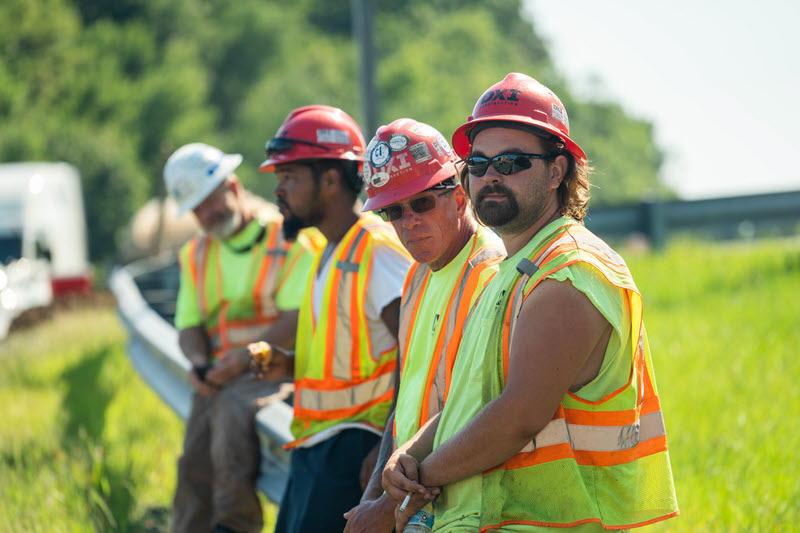
3. Contractor Expectations: Contractors, now more safety-conscious, demand higher safety standards on sites to manage their insurance costs and mitigate litigation risks. This shift requires construction companies to adopt stringent safety policies, necessitates having dedicated safety personnel on-site, and heightens the need to document everything thoroughly.
4. Labor Challenges: The shrinking labor pool and limited construction knowledge among new recruits underscores the need for comprehensive training. The declining trend of construction as a multi-generational family business further complicates this issue, necessitating a focus on creating a safe and attractive work environment for new generations.
5. Culture of Care: Initiatives to improve the overall employment experience are becoming more prevalent. A culture that prioritizes safety is essential to retain workers and foster a sense of community and responsibility among them.
6. Professionalism in Safety Management: The increasing emphasis on safety within the construction industry is elevating working environment standards and positioning safety management as a highly sought-after career path. I am pleased to have collaborated with Keene State College, a leader in the expanding field of construction safety, to help develop its B.S. degree program in Construction Safety Sciences.
The focus on creating a safer work environment has become central to the operation of construction companies. But how can technology, particularly software tools, significantly enhance safety?
Tablets are Transforming Civil Construction
The use of tablets and smartphones in the worksite is rapidly becoming widespread and is on the path to becoming a universal game-changer in construction. In the past decade, we’ve evolved from disorganized papers, bulky binders, and the labor of searching for the right documents.
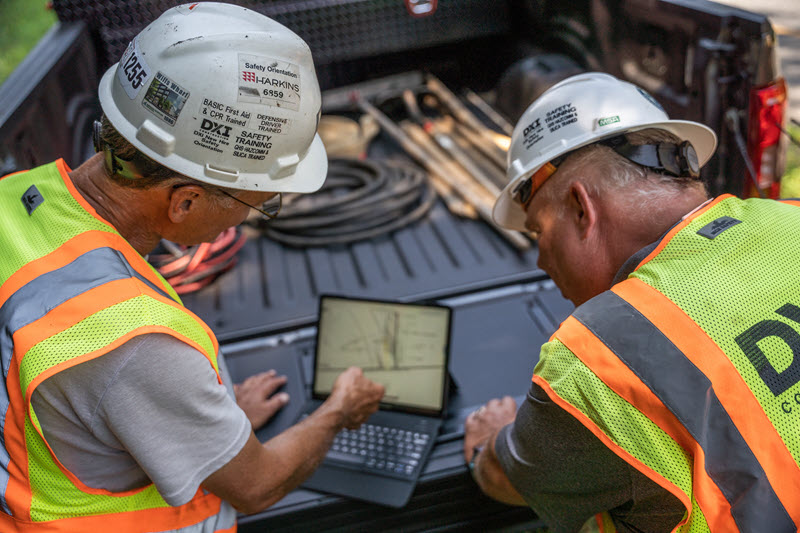
Tablets are increasingly used for a wide variety of crucial functions in excavation and other civil construction projects. For example, site plans can be easily accessed and updated in real time, allowing for immediate adjustments to be made as needed. Digital logs facilitate the management of preventive maintenance schedules, ensuring timely equipment servicing to prevent unexpected breakdowns. Digitizing maintenance records also offers a comprehensive history of each piece of equipment's upkeep, enhancing management and accountability.
Furthermore, tablets facilitate the viewing of 3D models of ongoing projects, enabling teams to visualize the result and adjust their work accordingly. These examples highlight how tablets have become indispensable tools in modern construction site management, extending well beyond safety to improve efficiency, accuracy, and project outcomes.
Imagine the tablet foremen typically use for checking off daily tasks and communicating with your team, evolving into a powerful safety-enhancing tool. This is the reality of technology in the workplace today, especially in the construction industry.
Safety apps and software are becoming essential at jobsites and are being integrated into daily routines as effortlessly as the morning coffee ritual.
The Many Benefits of Safety Software
So, how can software tools enhance safety in heavy civil construction companies? Cutting-edge safety software from companies like HCSS has the potential to transform safety protocols within construction businesses of all sizes. Software solutions are designed to address these challenges head-on, offering features that can substantially improve safety outcomes.
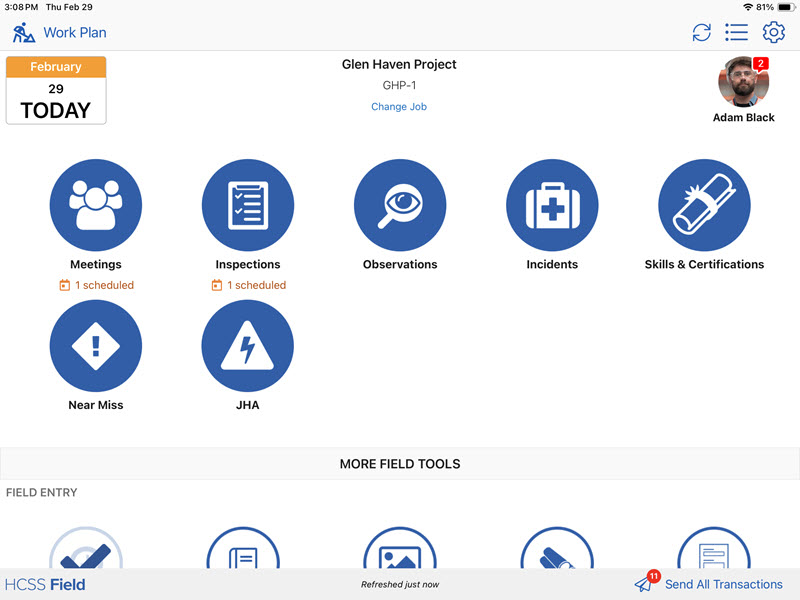
Here are a few ways these tools make a difference:
Safety Inspections: Ensure job site and equipment safety with a library of inspection forms and custom templates. Create an accessible audit trail and enhance inspections with text and photo capture.
Safety Meetings: Construction safety meeting software transforms safety management by enabling easy meeting recording, digital tracking of attendee signatures, and a comprehensive history accessible company-wide, enhancing efficiency and compliance.
JHAs & JSAs: Enhance safety management by identifying hazards, utilizing standard templates from OSHA and AGC for job hazard analysis and job safety analysis, preventing incidents, and analyzing trends in construction safety—all accessible on mobile devices.
Safety Observations: Empower anyone at the jobsite to contribute to safety by anonymously reporting unsafe practices using just a smartphone. This allows the entire team to work together towards a safer environment by providing real-time observations and feedback.
Incident Reporting: Enhance construction site safety with quick, easy, and complete incident reporting. Ensure OSHA compliance while swiftly documenting and analyzing incidents to foster a safer workplace.
Near Miss Reporting: Transform the safety culture from reactive to proactive by empowering crews to report and analyze near misses, fostering a positive safety environment, and reducing the risks of incidents before they happen.
Training and Certification Tracking: When selecting equipment for a specific task, it's crucial to ensure it's not only the right type for the job but also that it has undergone thorough preventive maintenance. The same principle applies to workers; it is critical to ensure they have the right training and certifications for their tasks. Safety software can streamline and automate this process. Certification and skill tracking software lets your company keep all certifications current, ensuring your team is qualified.
What's Driving the Adoption of Safety Software?
With all these benefits, what does it take to achieve faster adoption, and what obstacles are there?
Safety largely depends on the leaders in the field—foremen and safety managers. Their commitment to prioritizing safety and willingness to integrate digital tools into daily operations are critical for promoting widespread adoption.
The construction industry stands at a pivotal crossroads when facing the challenge of an aging workforce and the retirement of seasoned professionals. This demographic shift poses a significant challenge, as it demands the replacement of a wealth of experience. However, it simultaneously opens the door to a unique opportunity. As older workers step back, Millennials and Generation Z are entering the workforce, bringing with them a natural ease with technology.
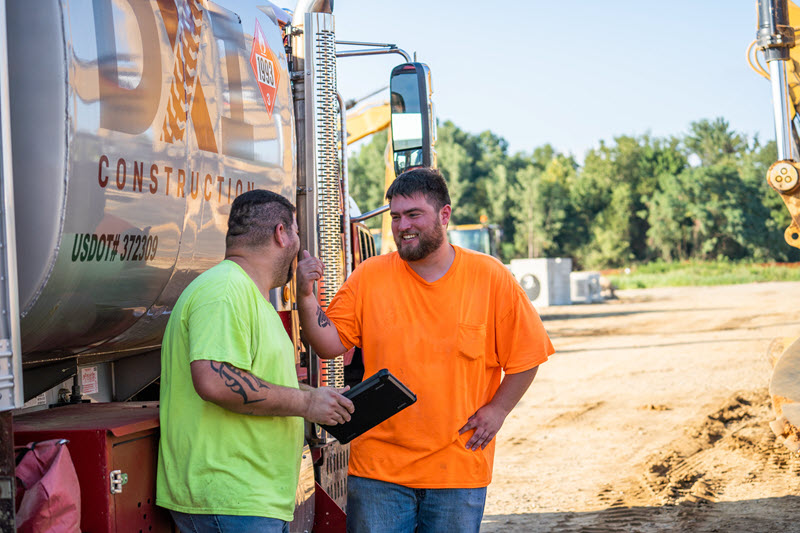
The rapid integration of software tools, like those offered by HCSS, makes a significant difference in enhancing safety and improving efficiency in every stage of the project and will only continue to grow with the support of a generation already in tune with technological innovation.
This transition sets the stage for a dynamic, collaborative learning environment where the digital fluency of younger workers can be leveraged to introduce their older colleagues to the benefits of technology, thereby accelerating the adoption of smarter, more innovative, and more efficient ways of working. With software that supports every stage of heavy civil construction, companies like HCSS are offering solutions from pre-construction, construction, and fleet management, to safety. The ability to access integrated software designed to support every step of production is an invaluable benefit of the transformation happening in the industry.
Conversely, the older generation has a wealth of industry experience and knowledge but often hesitates or even resists new technological tools. However, once they adapt, long-time employees discover that technology enhances their efficiency and work quality, which can extend their careers by making tasks easier.
Additionally, the infusion of new technology not only attracts younger generations who prefer digital workplaces but also raises the prestige of construction jobs, making it a more appealing employment path.
Embracing Technology for a Safer Future
The journey towards a safer jobsite is ongoing, but with the advent of digital tools and software solutions like those provided by HCSS, companies now have the power to make significant strides. By leveraging technology, construction companies can not only meet the industry's evolving demands but also protect their most valuable asset—their workforce.
